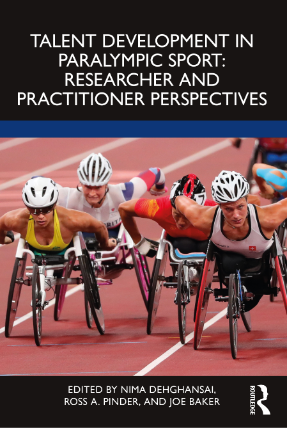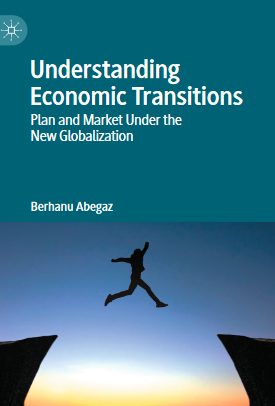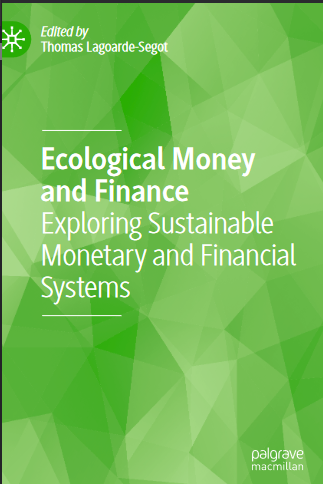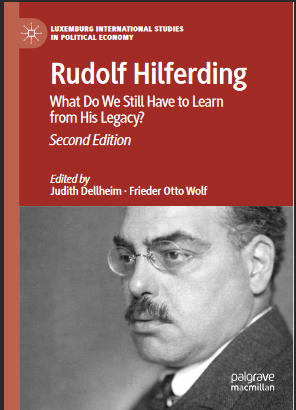موضوعات
آموزش و پرورش
ادبیات و زبان
پزشکی، دندانپزشکی و داروسازی
تاریخ و جغرافیا
داستان و رمان
دیگر
دین و فلسفه
روانشناسی
ریاضیات و آمار
سلامتی، تناسب اندام و رژیم غذایی
شیمی و پلیمر
علوم اجتماعی و حقوق
علوم زیستی و بیوتکنولوژی
فیزیک و نجوم
کامپیوتر و اینترنت
کتابهای کودکان و داستان
کسب و کار و اقتصاد
کشاورزی و دامپزشکی و غذا
معماری
مهندسی و فناوری
هنر و تئاتر
محصولات
The Iron Oxides Structure, Properties, Reactions, Occurences and Uses - Original PDF
نویسندگان: خلاصه: Preface to the Second Edition Since this book first appeared, there have been hundreds of new publications on the subject of iron oxides. These have covered a wide range of disciplines including sur- face chemistry, the geosciences, mineralogy, environmental science and various branches of technology. In view of the amount of new material that is available, we decided, that once the copies of the first edition were exhausted, we would prepare a second edition that would incorporate the new developments. As before, our aim has been to bring all aspects of the information concerning iron oxides into a single, compact volume. All the chapters have been revised and up- dated and new figures and tables added. The book is structured according to topic with the same arrangement as in the first edition being followed. In view of the re- cent recognition of the impact iron oxides have on environmental processes, a chap- ter dealing with the environmental aspects of these compounds has been added. The book concludes with a considerably expanded bibliography. We hope that this new edition will continue to be of interest to all those research- ers who, in one way or another, are involved with iron oxides. Numerous persons and institutions from around the world again supplied data, figures, colour pictures and electron micrographs and technical help. These include Dr. H. Chr. Bartscherer (Mçnchen), Mr M. Burlot (Apt), Dr. R. Båumler and Dr. Be- cher (Freising), Mr H. Breuning (Stuttgart), Dr. J. M. Bigham (Columbus, USA), Dr. G. Buxbaum (Bayer), Dr. L. Carlson (Helsinki), Dr. R. A. Eggleton (Canberra), Dr. F. G. Ferris (Toronto), Dr. R. W. Fitzpatrick (Adelaide), Dr. D. Fortin (Ottawa), Dr. M. R. Fontes (Guatemala), Professor R. Giovanoli (Bern), Dr. G. Glasauer (Guelph), Dr. M. Hanslick (Mçnchen), Dr. P. Jaesche (Freising), Dr. A. A. Jones (Reading), Dr. R. C. Jones (Honolulu), Dr. D. E. Janney (Tempe), Dr. R. Loeppert (College Station), Professor S. Mann (Bristol), Dr. E. Murad (Marktredwitz), Dr. H. Maeda (Tsukuba), Professor A. Manceau (Grenoble), Professor E. Matijevic (Potsdam, USA), Mrs U. Maul (Freising), Dr. J. P. Muller (Paris), Muse National de Prhistoire (Les Eyzies, France), Mr R. Miehler (Mçnchen), Dr. T. Nagano (Naka), Dr. H. Naono (Uegahara), NASA (Houston), Professor A. Posner { (Perth), Mrs M. Sauvet (Apt), Dr. N. Sabil (Mçnchen), Dr. P. Schad (Freising), Dr. A. Schei- degger (Zçrich), Dr. T. Schwarz (Berlin), Dr. A. Scheinost (Zçrich), Dr. D. Schçler (Bremen), D. Schwertmann (Freising), Professor H. Stanjek (Aachen), Dr. P. Self (Adelaide), Professor T. Sugimoto (Sendai), Dr. K. Tazaki (Ishikawa), Dr. T. TessieTALENT DEVELOPMENT IN PARALYMPIC SPORT: RESEARCHER AND PRACTITIONER PERSPECTIVES - Original PDF
نویسندگان: خلاصه: dentifying and developing talented athletes to their fullest potential is a central concern of coaches, sports scientists, and sports policymakers. However, there is currently limited practical and theoretical knowledge for those working in Paralympic sport. A systematic review by our research team (Dehghansai et al., 2017a), for example, highlighted the clear lack of literature examining athlete development. Subsequent studies (Dehghansai et al., 2017b; Dehghansai & Baker, 2020; Dehghansai et al., 2020, 2022, 2021, Houlihan & Chapman, 2017; Patatas et al., 2020, 2022) from research groups around the world have expanded our understanding, and provided the impetus for this book, which aims to synthesize the most up-to-date research with practice across international Paralympic sport systems (e.g., from those in Australia, Belgium, Brazil, Canada, Czech Republic, United Kingdom, United States, Netherlands, and New Zealand). As part of Australia’s preparation for the Tokyo 2020 Paralympic Games, two of the authors/editors have experienced first-hand the potential opportunities for supporting athlete development. We have witnessed rapid performance trajectories, the quality and passion of coaches and other practitioners working in this field, and the creativity required to solve problems. We also observed (and experienced) many of the challenges that are highlighted and discussed at length throughout this book. We worked closely with sports which, during this period (i.e., 2016–2021), resulted in athletes winning medals at the 2020 Paralympic Games who were not even participating in that sport during the time of the previous Paralympic Games (i.e., Rio 2016 Paralympic GamesZufallsbefunde in der Skelettradiologi - Original PDF
نویسندگان: خلاصه: Vorwort Die sich in der Radiologie schon längst etablierte und ständig weiter zunehmende Bilderflut sowie die Modalitäten und Erfolge der Krebstherapien mit ausgedehnten prätherapeutischen und langfristigen Nachsorgeuntersuchungen führen zwangsläufig zur Aufdeckung von immer mehr Zufalls- und Nebenbefunden, die vor allem dem Nichtspezialisten in der Skelettradiologie erhebli- che interpretatorische Probleme bereiten können. Doch wie geht man damit um? Sicherlich nicht, indem man die Bilderflut durch mehr oder weniger ungezielte zusätzliche Unter- suchungsverfahren ausweitet und damit unter Umständen neue Zufallsbefunde kreiert. Das gilt besonders für hoch sensitive aber weniger spezifische Modalitäten. Der anspruchsvolle und präzise Radiologe wird vielmehr ein ergänzendes Verfahren einsetzen, das – an der anatomischen Struktur des Zufallsbefunds orientiert – eine höhere Spezifität besitzt und zu einer begründeten und klinisch brauchbaren Diagnose führt. Der häufig angewendete Trick, sich der Verantwortung zu entziehen und eine histologi- sche Abklärung zu empfehlen, sollte gemieden werden. Denn die histologische Interpretation des Pathologen kann in der Skelett- radiologie nur so gut sein, wie der radiologische Befund klar und richtungsweisend ist. Ich betätige mich seit vielen Jahren als Konsiliarius in der Ske- lettradiologie. Das eingesandte Krankengut besteht zu etwa 50 % aus klinisch asymptomatischen Zufallsbefunden, hinter denen benigne Knochentumoren und tumorähnliche Läsionen, Erkran- kungen im Frühstadium, Teile einer systemischen Erkrankung, ungewöhnliche Normvarianten und vieles mehr stecken können. Es wird an mehr als 160 Fällen und fast 100 differenzialdiag- nostisch passenden Kasuistiken aufgezeigt, wie man professionell an solche Befunde unter Einbeziehung der individuellen Situation des Patienten herangeht, welche Relevanz sie haben und welche sinnvollen Empfehlungen man zum weiteren Prozedere geben kann. Mein Dank für die Überlassung der besonderen Fälle gilt den Kollegen CA Dr. med. Jürgen Wiens, Wolfsburg (Fall 22), Dr. med. Thomas Grieser, Augsburg (Fall 30), Professor Dr. med. Michael Laniado, Dresden (Fälle 34, 61), Privt.-Doz. Dr. Sönke Langner, Greifswald (Fall 45) und CA Dr. med. Nils H. Goecke, Wildes- hausen (Fall 131).Financial Innovations and Monetary Reform - Original PDF
نویسندگان: خلاصه: Many economics textbooks have explained the slow transformation from a sub- sistence economy to a barter economy, thus limited by the comparability of the objects or services exchanged. Although an improvement over the subsistence economy, the barter economy remains cumbersome and inefficient, as it requires the simultaneous acceptance of a transaction by both parties with physical delivery. The barter economy eventually gave way to a financial economy that was made possible by the issuance of money, a potentially universal intermediate means of payment, conducive to labor specialization and economic development.1 The Greek civilization and the emerging monetary system that resulted from it led international trade for centuries (from the fifth to the first century BC). Dur- ing this period of antiquity, the countries surrounding the Mediterranean became a world of commercial and industrial competition with the Greeks, the Phoenicians in the west and the Medes on the southeastern border as the playersUnderstanding Economic Transitions - Original PDF
نویسندگان: خلاصه: Around 1990, about a quarter of the world’s population lived in middle-income socialist economies and another quarter in high-income and middle-income cap- italist economies. The remainder lived in low-income economies with varying admixtures of planning, markets, and informal exchange institutions. Forty years later, the remaining outposts of socialism are Cuba and North Korea, while a few others (mainly in the former states of the Soviet Union) wallow in the no man’s land of neither functional capitalism nor socialism. The USSR sustained seven decades of statist socialism between 1922 and 1992, Central Eastern Europe (CE) and Southeastern Europe (SEE) for nearly five decades, and China for a little over three decades. By 2000, nearly all have systemically “transitioned” from a centrally-planned economy to some form of a decentrally organized market economy. How and why large parts of Europe, Eurasia, and East Asia transitioned out of the capitalist system in 1917–1952, how they managed to industrialize in non-market settings, and how and why they came back to the capitalist fold are questions comparative economic systems seek to address. Furthermore, this wrenching structural change entailed a concomitant political transition from a monoparty system to an illiberal multiparty system in formerly socialist Europe and the former Soviet Union (FSU). Comparative Economic Systems (CES) focuses on the workings of institu- tional economic mechanisms across economic systems and income levels. CES, at the macro-, meso-, and micro-levels, dwells on the two foundations of an economic system: ownership types for productive assets (state vs. private) and the degree of centralization of decision-making over resource allocation and income distribu- tion (plan vs. market). The conceptual entry points are incentives (known rewards or residual legatee rights) and the sources of discipline (bureaucratic-based or market-based competition). More broadly, Comparative Economics (CE), which is broader than CES, melds the study of economic systems with historical insti- tutionalism and development economics to explore the determinants of prosperity and inequality properties over time and across economic space within a given economic systemEcological Money and Finance - Original PDF
نویسندگان: خلاصه: v As early as 1890, the economist Alfred Marshall wrote: ‘Economic condi- tions are constantly changing, and each generation looks at its own prob- lems in its own way’. Our generation, in turn, faces particularly pressing problems: financial crises, the uncertain effects of technological change, widening income and wealth inequalities, rising public and private debts, geopolitical tensions, climate change, degradation of natural systems, etc. One particularly worrying fact is that the ‘Great Industrial Acceleration’ has now been identified as the root cause of a major disruption of the Earth system. This disruption is undermining not only the resilience of our global economy but also life on Earth. As shown in Fig. 1, a simple linear regression between global GDP and kilotons of CO2 emissions shows a correlation coefficient of 0.966. A linear regression between global market capitalization and CO2 emissions also shows a correlation coefficient of 0.960. The accumulation of monetary wealth (through GDP) thus mirrors the unaccounted destruction of ecosystem services, and the accumulation of a colossal energy and ecological debt. The rate of species extinction is now 100 times higher than the average observed over the last 10 million years. Nearly 1 million species are threatened with extinction. Compliance with the Paris Agreement—which commit to keeping global warming well below 2° by 2100—is clearly a civilizational issue that calls for a deep reorientation of our socioeconomic modeThe Profit Magic of Stock Transaction Timing - Original PDF
نویسندگان: خلاصه: Can a $10,000 investment yield $1,000,000 in a year? In five years? If so, what is the risk involved? These are the kinds of questions to which this work is addressed. Such fantastic results are possible in the stock market. Individual issues fluctuate widely enough and often enough to permit this and more. Techniques are presented here that put an average yield on invested capital of 10% per month, well within the realm of possibility. Compounding profits at this rate, such a yield can return $1,000,000 on a $10,000 investment within 50 months. An actual trading experiment will be described using these principles which produced an 8.9% yield per transaction--every 9.7 days. Such a yield, if continued, compounds $10,000 to $1,000,000 in 15 months. If such results can be attained in the market -- why isn't everyone doing it? The answer is complex, but the elements are simple: effort, knowledge and psychological barriers. Any goal this worthwhile requires time and effort. Most investors, amateur and professional do not have the kind of analytical background needed to shear through rumour, opinion, and adage to get at the basis of why stock prices change. And finally, even with knowledge in hand, many investors lack training in the emotion-logic balance required for success. Nevertheless, all of these obstacles can be overcome. It is the purpose of this book to provide you with the essentials. The results are yours if you care to apply yourself with sufficient intensity. Investment operations will be presented here in a deliberately unorthodox manner. We will turn our backs firmly on all cliches, adages, and market lore that will not withstand critical scrutiny. Where necessary, we will not hesitate to form new ones that do fit the facts. You will find here that the big money in investing stems from the principle of "profit compounding:---of short-term trades. It is further shown that this potential cannot be exploited in an optimum manner without a large improvement in transaction-timing capability that cannot be achieved using traditional investment methods. You will be exposed to: a concept of profit maximization; a model of stock price motion with prediction implications; an explanation of why chart patterns form---and how to use this knowledge to your profit; step-by-step methods for using the price-motion model to generate definite "wait," "buy," "hold," "sell," "sell short," "cover short," and "protect profit" signals; an explanation of why moving averages work and how to design your own for use in transaction timing; a complete trading method: how to select issues, how to analyse them for action signals, and how to improve your chances of turning and keeping a profit; the extent to which you should be concerned by chance factors, whether or not you should sell in case of war or financial crisis; the reasons why psychological considerations can affect your profits and what you can do about it; an introduction to numerical analysis and spectral analysis, upon which the results on the book are based. The problems of trading techniques and methods are dealt with directly. Enough methods and references are included to permit further research if desired.Handbook of Hope Theory, Measures, & Applications - PDF
نویسندگان: خلاصه: This Handbook of Hope simply would not have happened without a small army of graduate students who, over the past decade, have come into my office one by one and suggested yetanother angle from which we could view hope. In that sense, what has come to be called hope theory has been like a gemstone that, when held to the light, sends shimmers of ideas about yet other possible implications or experiments. I have produced previous theories about reactions to personal feedback, uniqueness seeking, excuse making, and reality negotiation, hue none of chose have continued co produce the sufficiently intriguing questions to get me revved up for yet another experiment. Hope theory has been a great energizer at a time in my life when I have needed it. For the past seven years I have had a severe, unrelenting, and undiagnosed chest pain that is with me from my fim waking moments to the time th.at I slip off into sleep. Although I have been taking powerful pain killers, I think that none of those pills matches the positive effects of my getting lost in theory and research and work- ing with my students. At age 55 (by the time this book is published), I still enjoy the theory and bench science to the same degree that I did as a brand new 27-year- old assistant professor here at Kansas. And so, I have much for which to be th:.ink- ful.Great Minds in Regional Science, Vol. 2 - Original PDF
نویسندگان: خلاصه: This second volume in the book series, Great Minds in Regional Science, continues telling the story, begun in the first volume, of the intellectual history of regional science. The perspective provided is through the lens of the contributions made by individual scholars influential to the multidisciplinary field’s establishment and development. The Great Minds series is a project of The Regional Science Academy (TRSA). The contributing authors are, themselves, leading scholars in the field, many having already been elected to membership in the Academy and as Fellows of the Regional Science Association International. Each chapter gives the author’s contemporaneous view on the scientific relevance of a great thinker. The sets of Great Minds featured in the specific volumes of the series have been chosen to include a blend of well- known figures and others meriting wider recognition for having advanced—in some significant way—the field’s pedagogy and institutionalization. The books in the series, Great Minds in Regional Science, together with those in The Voice of Regional Science (general and strategic reflections on new topics in regional science) currently comprise the Regional Science Academy’s meta-series, Footprints of Regional Science, under the general editorship of Kingsley Haynes, Karima Kourtit, and Peter Nijkamp. Since early 2016, highly successful series of sessions sponsored by the Academy have been held at locations throughout the world and featuring mini-lectures on topics germane to the two constituent book series. The chapters published in this volume of Great Minds in Regional Science derive from these earlier presentationsRudolf Hilferding What Do We Still Have to Learn from His Legacy? - Original PDF
نویسندگان: خلاصه: Editors and authors are, of course, grateful for the interest of our readers that has made it possible to realise a second edition now. We have made use of this happy occasion to correct mistakes we had overlooked in the first edition, to actualise the texts wherever needed, and to add four texts: one by Michael R. Krätke on the still unpublished notes of Hilferding’s last manuscript which had been published post-humously (discussed as such by F. O. Wolf), and another one, also by Krätke, on Hilferding’s cor- respondence; plus a presentation of Krzywicki, the Polish ‘equivalent’ to Hilferding, by Toporowski, as well as a contribution by the editors open- ing a perspective on Varga. We hope to fuel the incipient debate on Hilferding by providing access to these materials—which are not merely of biographical relevancy. We also have added a contribution on Eugen Varga, leading on to the next collection of texts planned in this series. All authors have had the occasion to revise their texts according to the need they could see for this. Accordingly, the new edition will serve as a use- ful tool for further developing the debate on Hilferding, after it had been unblocked from political fetters resulting from older political antagonisms. We have become aware that there is an important and specific debate on Hilferding in Japan. Minoru Kurata and Masaaki Kurotaki should at least be mentioned here. Unfortunately, we have not been able to find a Japanese author for presenting this debate authentically, for which we only Preface to the second edition xviii PREFACE TO THE SECOND EDITION have passing references in the volume. This remains an open challenge for further research and debate.1 In finishing this volume, while the terrible ‘military operations’ gener- ated especially by Putin and his narrow power circle are unfolding, we want to underline the deep internationalist character of our work aiming at strengthening critical thinking and emancipatory-solidarityآیا کتاب مورد نظر هنوز بر روی سایت قرار نگرفته است؟ جای نگرانی نیست! کافی است بر روی گزینه سفارش کتاب کلیک کرده و درخواست خود را ثبت کنید. در کمتر از چند ساعت کتاب شما را آماده خواهیم کرد.









